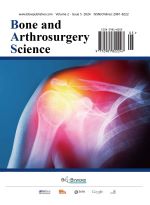Abstract
Objective: To evaluate the impact of bone cement distribution patterns on the surgical outcomes of percutaneous vertebroplasty (PVP) for osteoporotic vertebral compression fractures (OVCF). Methods: Sixty-four patients with OVCF treated at our hospital from January 2022 to December 2023 were included and divided into two groups based on bone cement distribution patterns: the clustered group and the diffuse group. Both groups underwent PVP. We compared the incidence of bone cement leakage, operative time, blood loss, changes in Visual Analog Scale (VAS) pain scores, and Oswestry Disability Index (ODI) scores before and after treatment between the two groups. Results: The number of cases with bone cement leakage was significantly higher in the diffuse group compared to the clustered group (P < 0.05). There were no significant differences between the two groups in terms of volume of bone cement injected, intraoperative blood loss, or surgical time (P > 0.05). Post-treatment, both VAS and ODI scores were lower than pre-treatment scores in both groups, with the diffuse group showing significantly lower scores than the clustered group (P < 0.05). No postoperative adverse complications were observed in either group. Conclusion: PVP is highly effective for treating OVCF. A more uniform distribution of bone cement is associated with a greater reduction in postoperative pain and improved functional outcomes. However, careful attention is needed to prevent bone cement leakage.
References
Zileli M, Sharif S, Fornari M, 2021, Incidence and Epidemiology of Thoracolumbar Spine Fractures: WFNS Spine Committee Recommendations. Neurospine, 18(4): 704–712.
Vandenbroucke A, Luyten FP, Flamaing J, et al., 2017, Pharmacological Treatment of Osteoporosis in the Oldest Old. Clinical Interventions in Aging, (12): 1065–1077.
Tsuda T, 2017, Epidemiology of Fragility Fractures and Fall Prevention in the Elderly: A Systematic Review of the Literature. Current Orthopaedic Practice, 28(6): 580–585.
Galindo-Ciocon D, Ciocon JO, Galindo D, 1995, Functional Impairment among Elderly Women with Osteoporotic Vertebral Fractures. Rehabilitation Nursing, 20(2): 79–83.
Papaioannou A, Watts NB, Kendler DL, et al., 2002, Diagnosis and Management of Vertebral Fractures in Elderly Adults. The American Journal of Medicine, 113(3): 220–228.
Hochmuth K, Proschek D, Schwarz W, et al., 2006, Percutaneous Vertebroplasty in the Therapy of Osteoporotic Vertebral Compression Fractures: A Critical Review. European Radiology, 16(5): 998–1004.
Klazen CA, Lohle PN, De Vries J, et al., 2010, Vertebroplasty Versus Conservative Treatment in Acute Osteoporotic Vertebral Compression Fractures (Vertos II): An Open-Label Randomized Trial. The Lancet, 376(9746): 1085–1092.
Zhao YS, Li Q, Li Q, et al., 2017, Effect of Different Bone Cement Dispersion Types in the Treatment of Osteoporotic Vertebral Compression Fracture. China Journal of Orthopaedics and Traumatology, 30(5): 446–452.
Patel D, Liu J, Ebraheim NA, 2022, Managements of Osteoporotic Vertebral Compression Fractures: A Narrative Review. World Journal of Orthopedics, 13(6): 564–573.
Fischer V, Haffner-Luntzer M, Amling M, et al., 2018, Calcium and Vitamin D in Bone Fracture Healing and Post-Traumatic Bone Turnover. European Cells & Materials, (35): 365–385.
Ambrose AF, Cruz L, Paul G, 2015, Falls and Fractures: A Systematic Approach to Screening and Prevention. Maturitas, 82(1): 85–93.
Jensen ME, Kallmes DE, 2002, Percutaneous Vertebroplasty in the Treatment of Malignant Spine Disease. Cancer Journal (Sudbury, Mass.), 8(2): 194–206.
Diamond TH, Champion B, Clark WA, 2003, Management of Acute Osteoporotic Vertebral Fractures: A Nonrandomized Trial Comparing Percutaneous Vertebroplasty with Conservative Therapy. The American Journal of Medicine, 114(4): 257–265.
Rousing R, Andersen MO, Jespersen SM, et al., 2009, Percutaneous Vertebroplasty Compared to Conservative Treatment in Patients with Painful Acute or Subacute Osteoporotic Vertebral Fractures: Three-Months Follow-Up in a Clinical Randomized Study. Spine, 34(13): 1349–1354.
Li Y, Hai Y, Li L, et al., 2015, Early Effects of Vertebroplasty or Kyphoplasty Versus Conservative Treatment of Vertebral Compression Fractures in Elderly Polytrauma Patients. Archives of Orthopaedic and Trauma Surgery, 135(12): 1633–1636.
D’Oria S, Dibenedetto M, Squillante E, et al., 2022, Traumatic Compression Fractures in Thoracic-Lumbar Junction: Vertebroplasty vs Conservative Management in a Prospective Controlled Trial. Journal of Neurointerventional Surgery, 14(2): 202–206.
Mattie R, Laimi K, Yu S, et al., 2016, Comparing Percutaneous Vertebroplasty and Conservative Therapy for Treating Osteoporotic Compression Fractures in the Thoracic and Lumbar Spine: A Systematic Review and Meta-Analysis. The Journal of Bone and Joint Surgery. American Volume, 98(12): 1041–1051.
Tang B, Cui L, Chen X, et al., 2021, Risk Factors for Cement Leakage in Percutaneous Vertebroplasty for Osteoporotic Vertebral Compression Fractures: An Analysis of 1456 Vertebrae Augmented by Low-Viscosity Bone Cement. Spine, 46(4): 216–222.
Tang B, Liu K, Wu L, et al., 2021, Factors and Strategies for Post-Vertebroplasty Residual Pain from Thoracolumbar Osteoporotic Vertebral Compression Fractures (OVCF): A Systematic Review. Research Square. https://doi.org/10.21203/rs.3.rs-162171/v1
Lv B, Ji P, Fan X, et al., 2020, Clinical Efficacy of Different Bone Cement Distribution Patterns in Percutaneous Kyphoplasty: A Retrospective Study. Pain Physician, (23): E409–E416.
